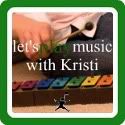Missed it altogether?
Want to share it with other family members?
Just want to see what Let's Play Music is all about?
I'm excited to present the following video of our April 28, 2012 end of year program!
First, here's a synopsis of what we learned from the songs in our Let's Play Music program:
Scotland's Burning
Many people think that “Do Re Mi Fa Sol La Ti Do” was made up f or “The Sound of Music”, but solfeggio is actually a method for teaching music that is over 100 years old. By putting syllables with hand signs, young minds can absorb how notes move around on the staff --before note reading is possible. Solfeggio also helps us audiate. You will see how they hear the song in their heads as they “leave out” a part!
Primary Chords Song /Chords in Pieces
The primary chords make up about 90% of all the music we listen to. Even though we might not yet be able to read music notation, we can still familiarize, internalize and even feel what the red (I), blue (IV), and yellow (V) chords sound like. Do you know all the pieces of your primary chords? I am Learning
How to Skip
This year the students have learned the basics about the musical staff. We learned to visually recognize the difference between baby steps, skips and leaps. This song reminds us that notes “from a line to the next line” or “from a space to the next space” are skips!
Old Paint
Once we understand how our primary chords work, then we can use them to make music! Old Paint has only one chord – the red chord! By simply playing the red chord in its pieces, it transforms into the accompaniment to one of our favorite songs.
Are You Sleeping?
We’ve learned that when you sing (or play) different things at the same time and they sound good together, it’s called harmony! Listen for the harmony between our voices AND our tone bells.
Dinosaur Song
Of course once we learned to read them on the staff, we were ready to take that knowledge and play baby steps, skips and even leaps on our bells---which is prepatory to be able to play on keyboards next year.
Do, Re, Mi
This song has it all! Watch as the children sing a major scale up and down, play it on the bells, use their solfeggio hand signs, and sing harmony all at the same time!!!
Can't Bug Me
One of the most exciting skills we learned this year is how to read and feel rhythm. We used jungle animals to help us learn how to subdivide a beat, and we can read rhythms because of our very musical bugs. Who knew that learning rhythmic notation could be so fun?!
The Magical Lamp--Georges Bizet “Aragonnaise” from Carmen
Puppet shows are our favorite! While we play, we’re listening intelligently to classical music, learning about form, recognizing themes and the moods of themes, and distinguishing various instruments. Can you tell which character is minor in this piece?
First Half
Second Half
I love these kids!







No comments:
Post a Comment